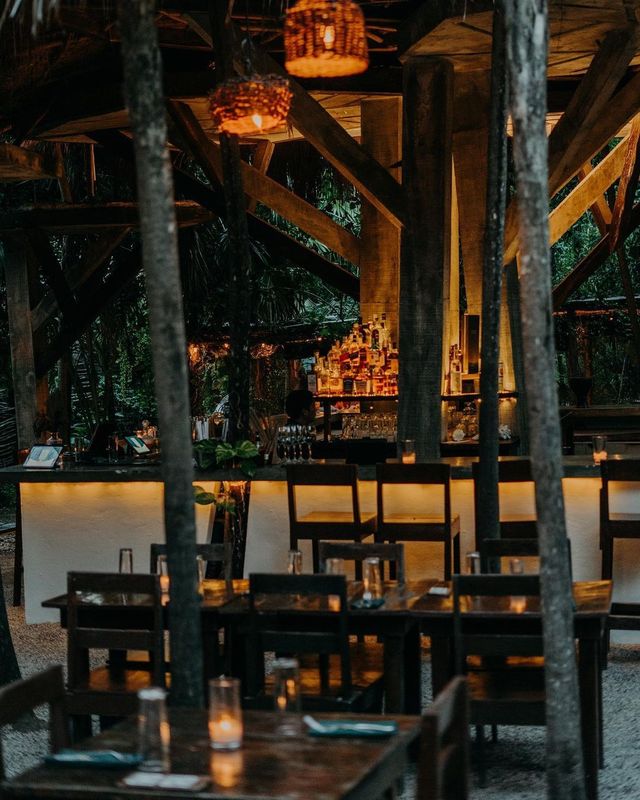Asian Fusion Restaurant: An One-of-a-kind Dining Experience in the Heart of Islamabad
Asian Fusion Restaurant: An One-of-a-kind Dining Experience in the Heart of Islamabad
Blog Article
Savor Authentic Eastern Cuisine With a Pan-Asian Spin for a Culinary Adventure
Starting a culinary trip through genuine Eastern cuisine, improved with a Pan-Asian twist, supplies an one-of-a-kind opportunity to explore the abundant tapestry of flavors that specify the region's varied cooking traditions. This experience invites you to savor the splendid balance of preferences-- sweet, salted, spicy, and sour-- balanced by fragrant natural herbs and spices. Imagine the innovative combination of Thai curry and ramen or the unanticipated pleasure of sushi burritos. As you consider these tempting meals, take into consideration the cultural stories and historical influences that form them, each bite providing a story waiting to be found.

Discovering Pan-Asian Flavors
In the realm of global gastronomy, Pan-Asian cuisine stands out for its impressive variety and the harmonious interplay of tastes from various Oriental societies. This culinary method celebrates the abundant customs and unique active ingredients found throughout the continent, creating a tapestry of preferences that is both intriguing and gratifying. Trick to Pan-Asian cuisine is its capability to balance contrasting flavors-- wonderful, salted, spicy, and sour-- while highlighting the quality and top quality of each active ingredient.
From the umami-rich soy sauce of Japan to the intense chili peppers of Thailand, Pan-Asian food provides a substantial scheme of tastes. These components are often integrated in inventive methods, improving meals with layers of complexity. For instance, using fragrant herbs such as lemongrass and cilantro, common in Vietnamese and Thai food, includes a rejuvenating brightness to dishes, while the unification of coconut milk supplies a luscious, abundant appearance.
The emphasis on fresh produce and fragrant spices ensures that each dish is not only a banquet for the taste buds but additionally for the detects. Pan-Asian cuisine invites restaurants to begin on a culinary trip, discovering the huge and varied landscapes of Asian gastronomy with every bite.
Combination Meals to Attempt
While Pan-Asian food is commemorated for its standard flavors, the modern culinary landscape is significantly embracing fusion dishes that mix these classic components with influences from other regions. This ingenious strategy not only honors the rich heritage of Asian culinary arts however also presents novel preference experiences that interest modern tastes.
An archetype of such a combination recipe is the Korean-Mexican taco, where seasoned bulgogi beef is covered in a cozy tortilla, topped with kimchi and a hot gochujang-infused salsa. This mix weds the vibrant, tasty tastes of Korea with the lively, fresh aspects of Mexican cuisine. In a similar way, sushi burritos have gained appeal, joining together the fragile virtuosity of Japanese sushi with the passionate, hand-held comfort of a burrito, often including fusion active ingredients like tempura shrimp and avocado with a drizzle of wasabi mayo.
Another noteworthy dish is Thai curry ramen, which instills the luscious, fragrant spices of Thai curry right into the calming brew of typical Japanese ramen, creating an unified mix that entices the detects. These combination meals extend past mere uniqueness; they represent a culinary discussion in between cultures, encouraging exploration and advancement worldwide of Pan-Asian food.
Necessary Ingredients and Seasonings
To absolutely value Pan-Asian food, one need to understand the essential ingredients and seasonings that create its structure. This diverse culinary design attracts from an abundant tapestry of Asian customs, employing a harmonious mix of structures and flavors. Key components include soy sauce, fish sauce, and oyster sauce, which give a savory umami deepness vital to Eastern meals. Complementary to these are rice vinegar and mirin, providing a fragile level of acidity and sweetness.
Fragrant components are pivotal, with ginger, navigate to this website garlic, and lemongrass being common throughout different Pan-Asian dishes. These components offer an aromatic base that improves the intricacy of click this link flavors. Seasonings such as celebrity anise, cardamom, and cinnamon present heat and character, echoing influences from areas like China and India.

Food Preparation Methods and Tips
Understanding the art of Pan-Asian food calls for experience with its unique food preparation methods, each adding to the dynamic tapestry of flavors this cooking practice is commemorated for. Central to these techniques is the stir-fry, a rapid cooking strategy that preserves the nutritional stability and dazzling colors of active ingredients. Making use of a frying pan, the stir-fry approach enables also heat circulation, necessary for accomplishing the particular structure and flavor balance of Pan-Asian dishes.
Another fundamental method is steaming, specifically common in Chinese food. This mild method keeps the all-natural tastes and nutrients of components, making it ideal for seafood and vegetables. Dumplings, a beloved staple, usually take advantage of steaming, causing soft, delicious textures.
Barbecuing, additionally indispensable, presents smoky midsts to dishes such as Korean bulgogi or Japanese yakitori (pan asian restaurant Islamabad). This method frequently entails marinating components, allowing flavors to pass through deeply prior to cooking over an open fire or warmer
Lastly, mastering the art of stabilizing flavors-- sweet, sour, salty, bitter, and umami-- is crucial. Appropriately layering these elements my review here can raise a recipe from ordinary to remarkable, supplying a complicated and pleasing culinary experience that symbolizes the significance of Pan-Asian cuisine.
Dining Experiences Worldwide
Around the world, Pan-Asian food uses an exceptional eating experience, celebrated for its rich tapestry of tastes and lively discussions. This cooking sensation has gone beyond social boundaries, catching the hearts and tastes of food fanatics worldwide. In cosmopolitan cities like New York, London, and Sydney, Pan-Asian restaurants act as fusions where cooking practices from Thailand, Japan, China, and past converge, offering restaurants with an eclectic mix of dishes that highlight the region's diversity.
The international appeal of Pan-Asian food lies in its ability to use both credibility and technology. Chefs skillfully marry standard components such as lemongrass, soy sauce, and miso with modern strategies, causing meals that are both familiar and refreshingly brand-new. This blend enables diners to embark on a culinary journey that appreciates heritage while welcoming modernity.
Additionally, eating experiences are raised via thoughtfully made environments that mirror the principles of Pan-Asian visual appeals. From minimalist Japanese-inspired insides to dynamic Thai-themed rooms, each restaurant provides an one-of-a-kind atmosphere that enhances the cooking offerings. Because of this, clients are not merely eating a dish however partaking in a cultural experience, making Pan-Asian eating an absolutely international sensation.
Verdict
The exploration of Pan-Asian food provides a profound understanding of the complex interplay of tastes and cooking practices across Asia. By welcoming combination dishes such as Thai curry ramen and sushi burritos, the cooking journey not only highlights the adaptability of standard components however additionally showcases ingenious modern-day techniques. This gastronomic journey, enriched by necessary flavors and cooking approaches, supplies an unique chance to value the social diversity and cooking artistry that define Pan-Asian cuisine on a global scale.
Embarking on a culinary trip through authentic Asian food, enhanced with a Pan-Asian twist, provides an one-of-a-kind chance to explore the abundant tapestry of flavors that specify the region's varied cooking traditions.In the realm of international gastronomy, Pan-Asian cuisine stands out for its amazing variety and the unified interplay of flavors from numerous Eastern societies. Key to Pan-Asian cuisine is its capacity to balance contrasting flavors-- wonderful, salted, spicy, and sour-- while highlighting the freshness and quality of each active ingredient.

Report this page